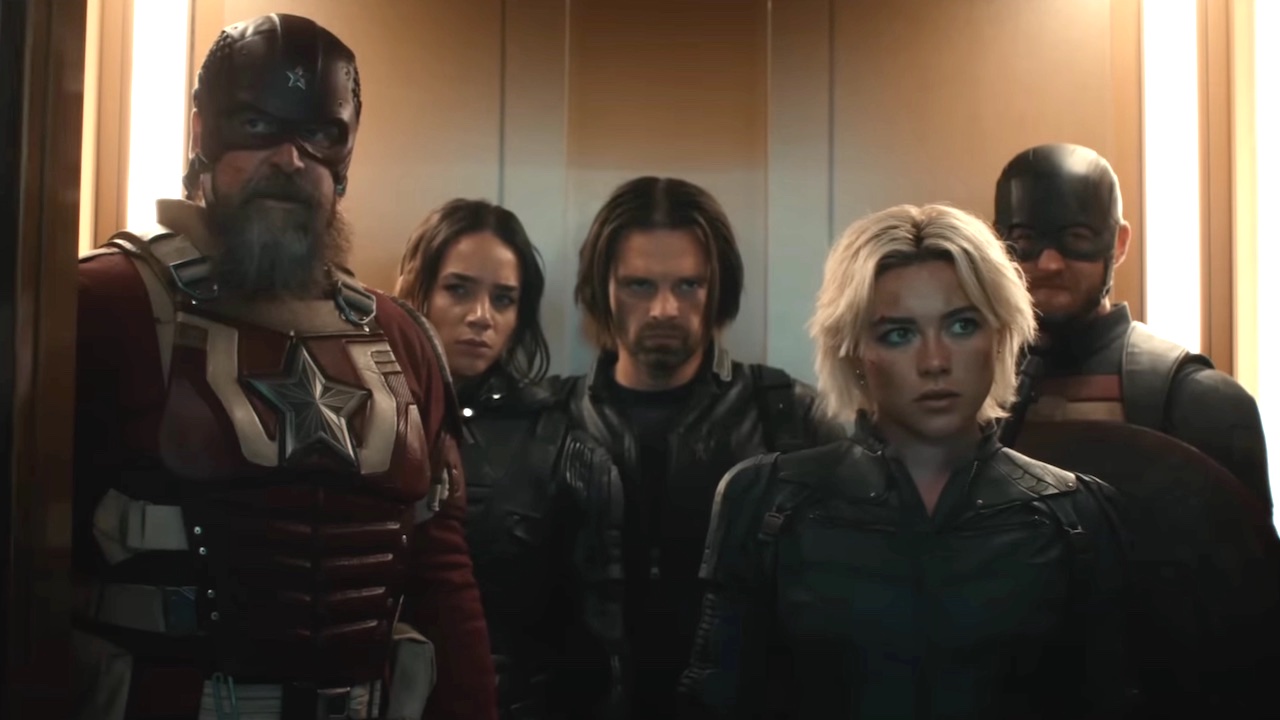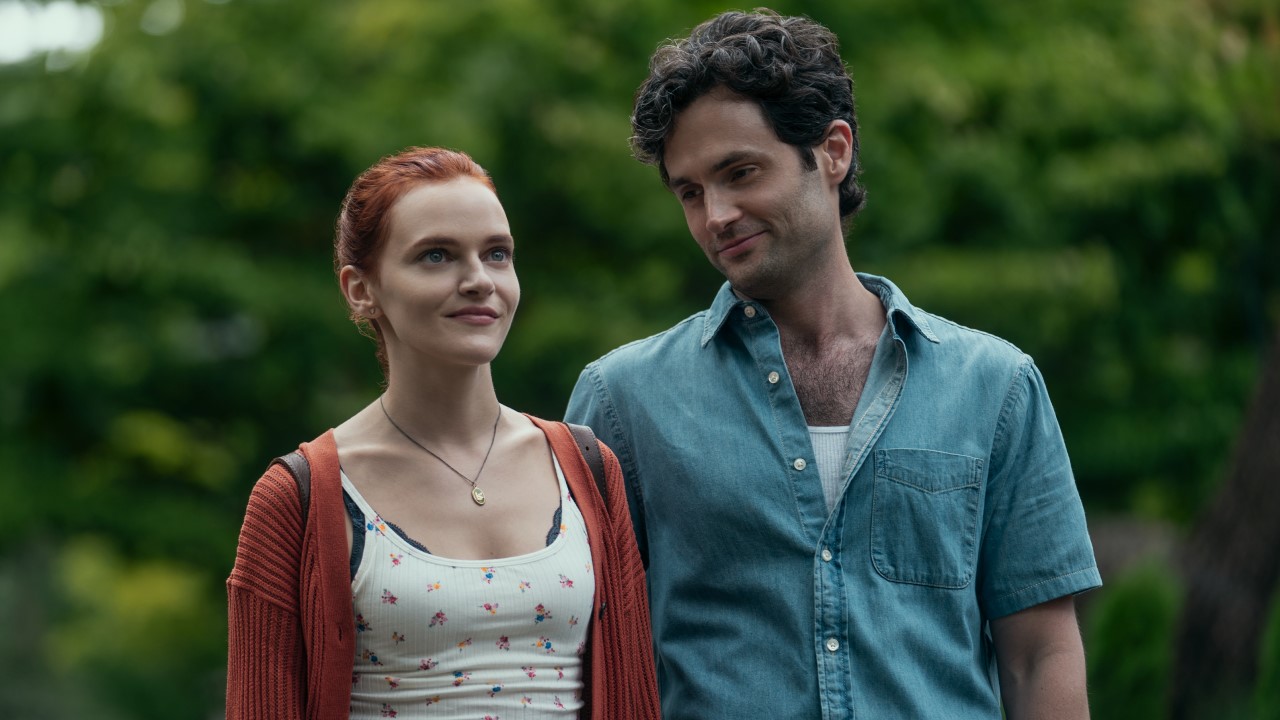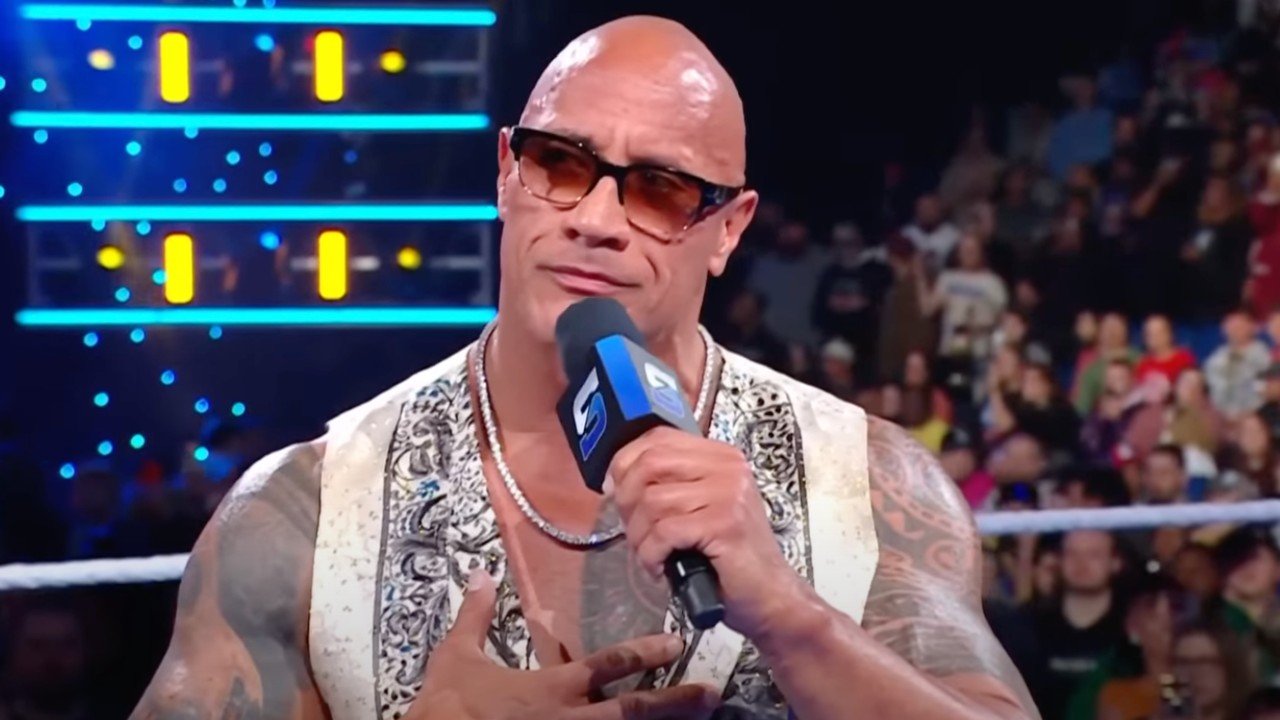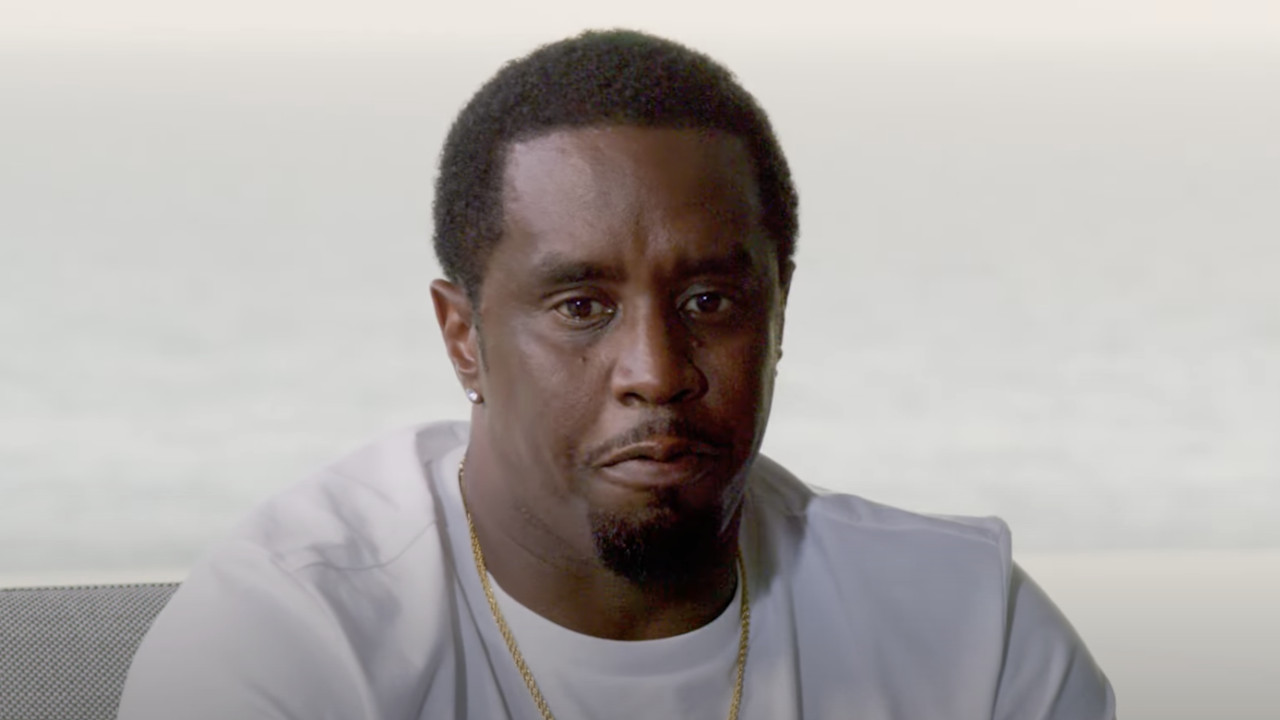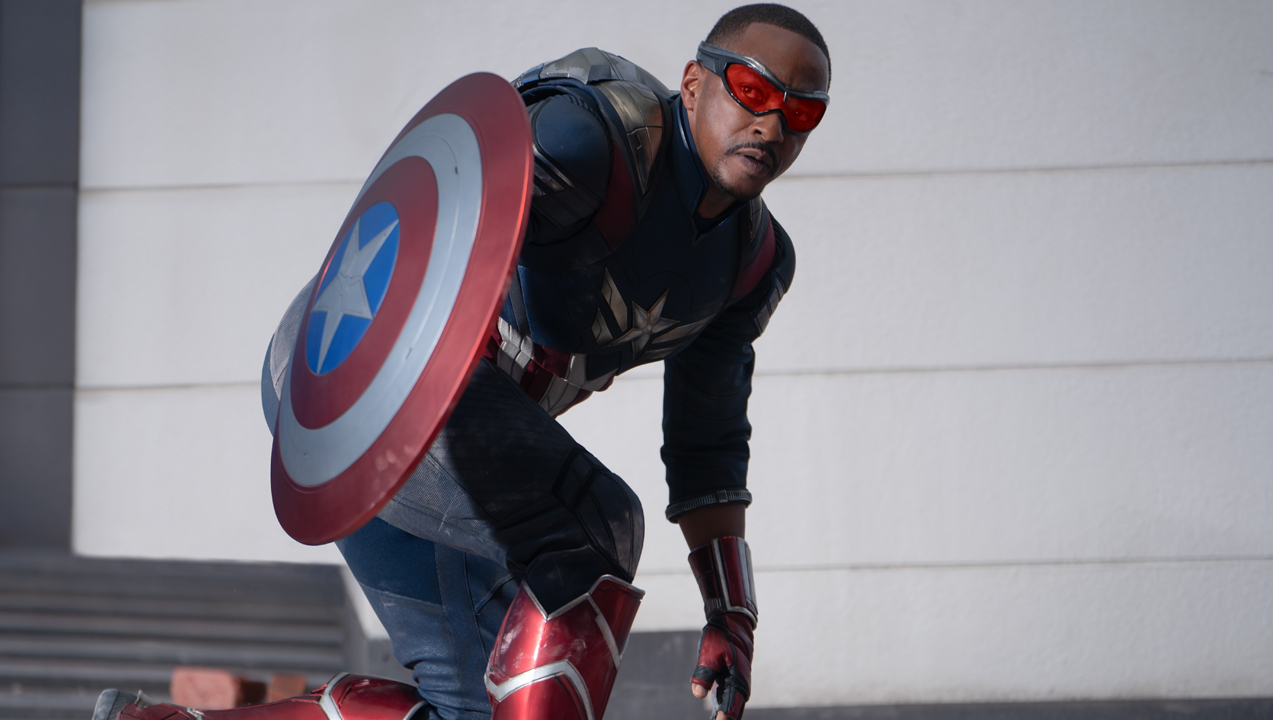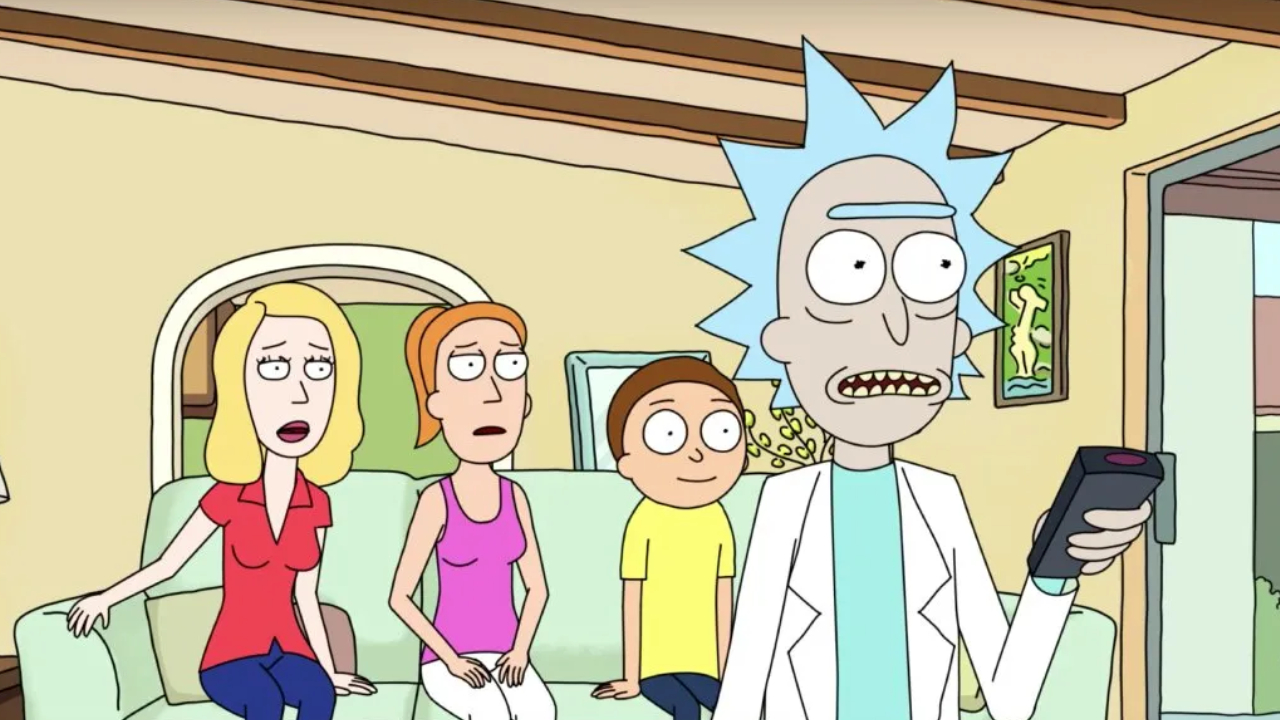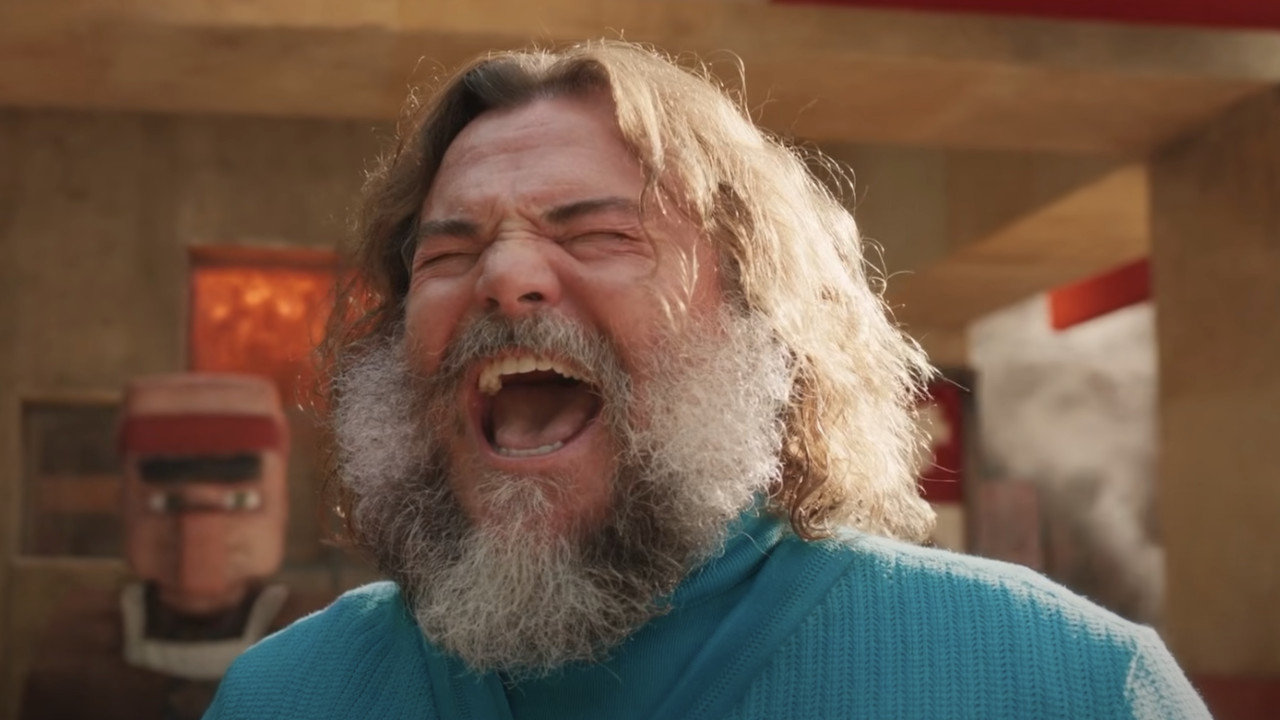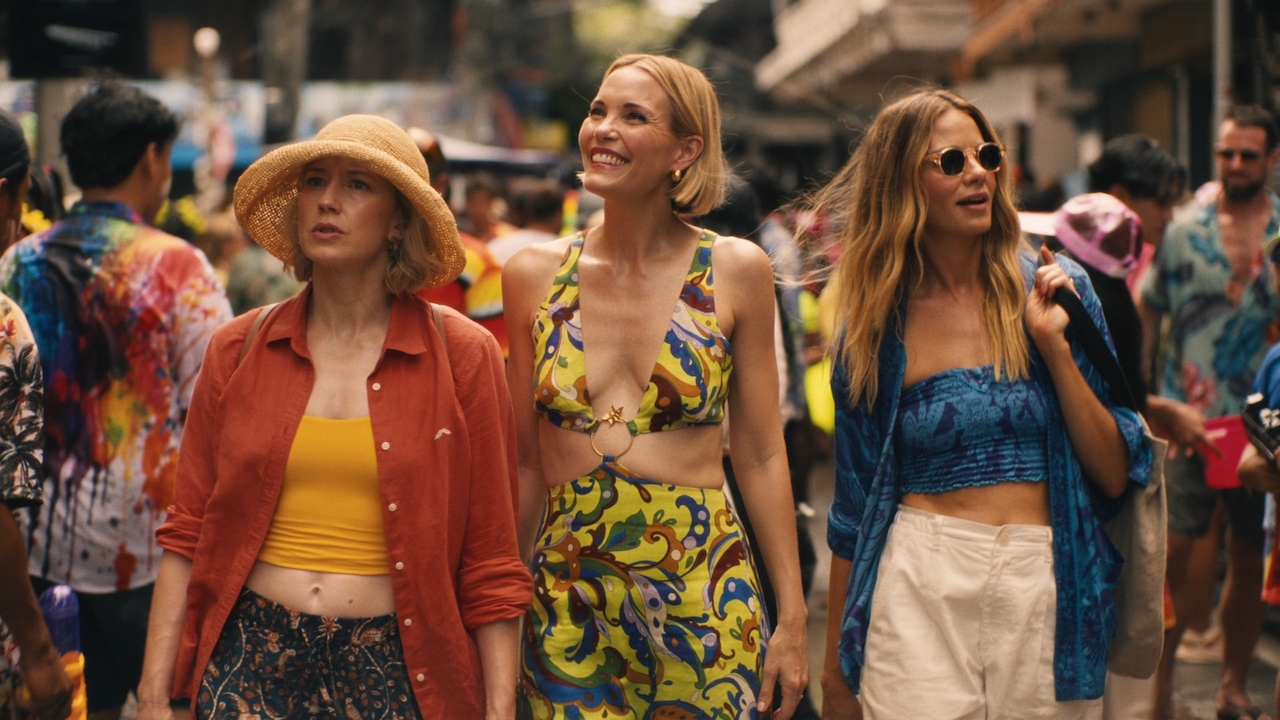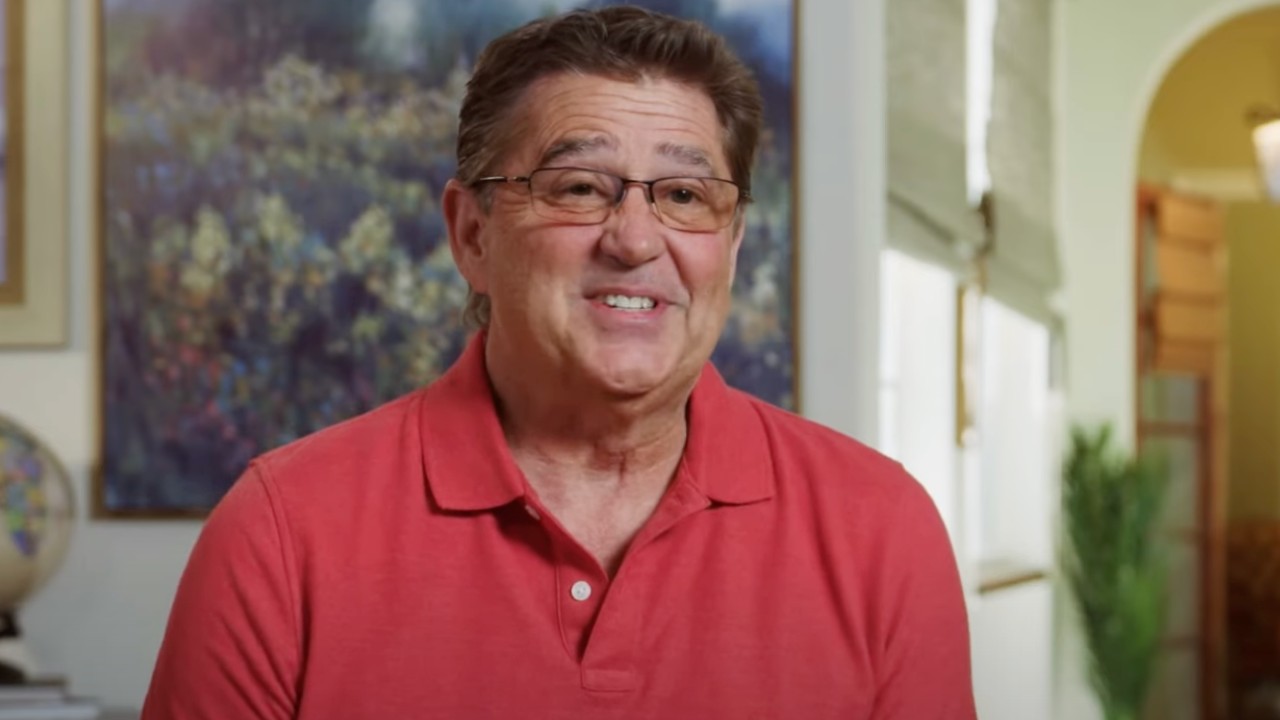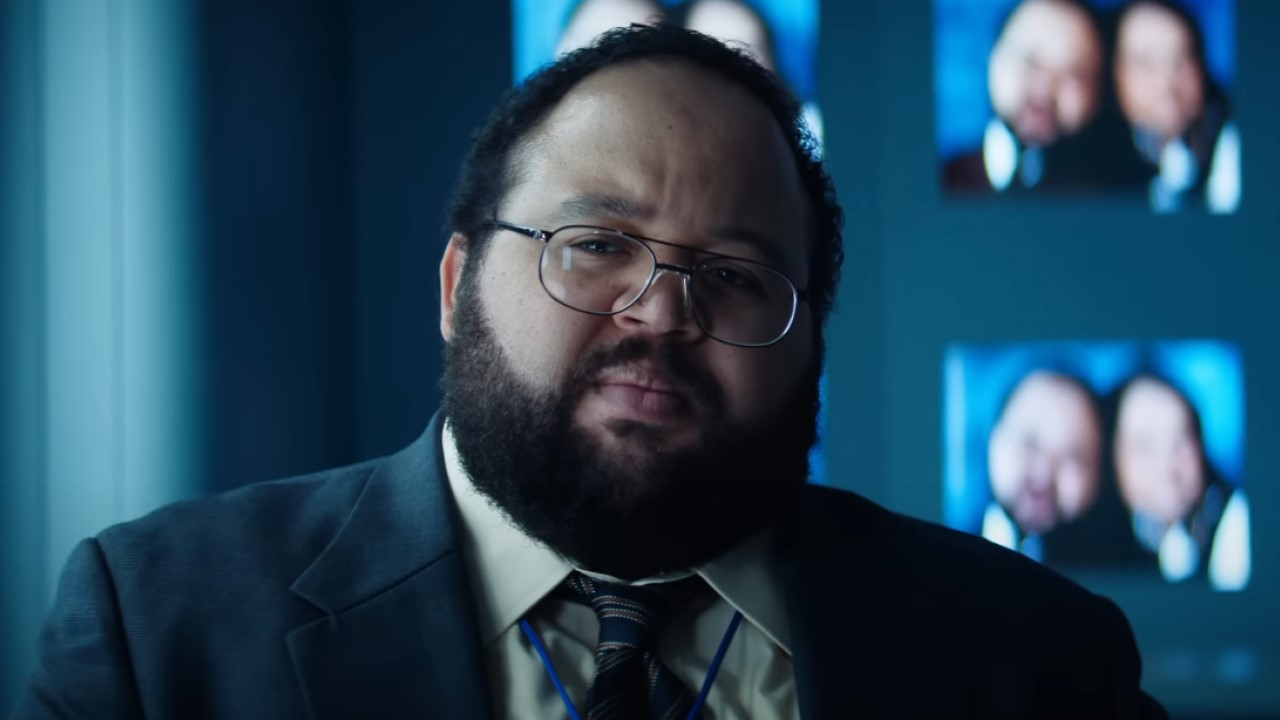Solar Opposites' Justin Roiland Explains Origin Behind 'The Wall' And That Amazing Seventh Episode
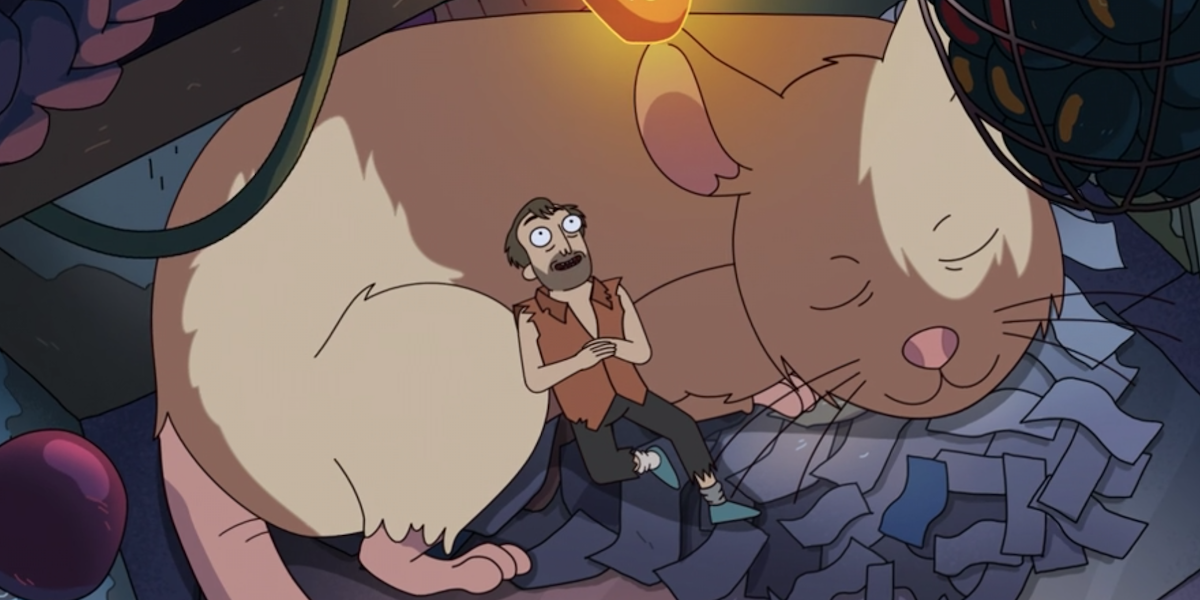
Warning! Spoilers below for Episode 7 of Solar Opposites' first season.
It's a magical time of year for fans of sci-fi comedy, with the return of Rick and Morty Season 4 lining up with the release of Hulu's Solar Opposites, which just so happens to come from R&M's Justin Roiland and Mike McMahan. On the surface, Solar Opposites takes a hilariously offbeat look at an alien family growing accustomed to an Earthly existence in suburbia, but the show's true genius lies in its world-within-a-world dubbed The Wall, in which society is rebuilt by a growing population of miniaturized rude people.
The Wall is first introduced in Solar Opposites' premiere within the bedroom of the younger aliens Jesse and Yumyulack, with the latter being its architect and supplier of shrunken residents. The ever-evolving side-plot hit an unexpected apex in Episode 7, "Terry and Korvo Steal a Bear," with the entire runtime dedicated to a reference-filled uprising inside The Wall. It will easily go down as one of my favorite TV experiences in 2020, so I was definitely excited to talk to Justin Roiland and Mike McMahan about how The Wall idea came together. Here's how Roiland started things off:
During the break between Seasons 2 and 3 of Rick and Morty, I was working with Mike and thinking a lot about [Solar Opposites], and sort of getting a lot of concept art for the world and the characters. One of the things that I got was this wall in the kids' room, and at the time, it looked a bit more like a fallout shelter, sort of like these wide floors with furniture and stuff in there, and the kids sort of just peering into it. I have some really cool concept art of Yumulak looking into The Wall, and there's no people in there, but it's all furnished and ready to go. Basically, it was an idea we had really early on, even before we wrote the pilot, that we'd loved. And the idea was to kind of slowly inch our way to a bigger story inside The Wall and treat The Wall like a high-stakes microcosm of society, where it's sort of post-apocalyptic and they have to shed all of their regular-world belief systems and roles, and kind of take on these new roles inside this Wall.
While it wasn't immediately clear just how well thought-out everything Wall-related would be, early episodes of Solar Opposites did offer lots of intriguing morsels of what life was like inside The Wall's myriad compartments. In particular, I loved seeing all the ways the characters repurposed trash and enlarged household items for primitive goods and weaponry. By the time Episode 7 came around, the humans' story was vast enough that it inarguably deserved to be meticulously explored through Tim/Lindsey leading the Resistance against The Duke.
Here's Justin Roiland talking about what fascinated him about bringing The Wall to life.
It was really an interesting concept that I fell in love with right away, because I just loved the idea of exploring humanity on that level: what would actually happen if you were shrunk down into a wall and you were in there for a really long amount of amount of time. It's almost like being in a prison. It's like a giant, massive prison with no real predetermined warden or guards, so you kind of have to fend for yourself and figure out who's going to be on top. Who's gonna be under the thumb of those people? What kind of rule are we going to have? What kind of caste system? What kind of currency? All that stuff. And I went way into the deep end on it, you know, just thinking how exciting that would be to do inside the vehicle of this really fun sci-fi comedy.
Considering Rick and Morty is the kind of show whose dense plotting inspires lengthy theorizing and hypothesizing, it's only fitting that Justin Roiland gave Solar Opposites its own obsession-fueled story elements, albeit with completely different style and substance. Of course, both Roiland and McMahan knew The Wall was a lofty concept that wouldn't be the easiest sell. Below, Roiland talked about putting the pieces in place, and how lucky they were to land at Hulu.
I never imagined how how closely we would actually pull that off in the final product. Because at the time, it was this really cool idea, and Mike and I were really excited and we looked at the Wall stuff as a very serialized elements of the show. We sat down and together, we broke like the story of The Wall for the first season – just the real, real broad strokes of like, 'Okay, in this episode, this will happen. And then this one will be the full, all-Wall episode, and we'll do some crazy...' You know, we didn't have all the answers, but we knew the general brushstrokes of the story and what it needed to be throughout the course of the season pretty early on. And that was something that we really could have only done on Hulu. I mean, it's something that we couldn't have done exactly the way we wanted to on network, I don't think. It was just too weird, too serialized for traditional tune-in broadcast type TV, so we were really happy and lucky when the show ended up at Hulu, because we knew immediately we were going to be able to go back to the Wall idea.
To Justin Roiland's point, one of the only traditional TV networks that might be into Solar Opposites' dual storylines would be Adult Swim, as guided by Roiland's successes with Rick and Morty. Thankfully, the duo landed at a streaming service that didn't balk at such an audacious plan for an animated comedy, though Mike McMahan notes that there was the slightest bit of hesitance whenever he and Roiland pitched their grand scheme.
CINEMABLEND NEWSLETTER
Your Daily Blend of Entertainment News
When we pitched to Hulu, we literally told them, 'We want these stories that grow into a whole episode of people in this Wall.' And to Hulu's credit, they were like, 'Alright, we won't not buy your show,' and then we did it, and they just let us.
Perhaps if the episode had been anything less than spectacular, Hulu might have delivered some constructive criticism from on high. But Solar Opposites reached transcendence with Episode 7, and it will hopefully pave the way for more shows (either animated or live-action) to take more storytelling risks.
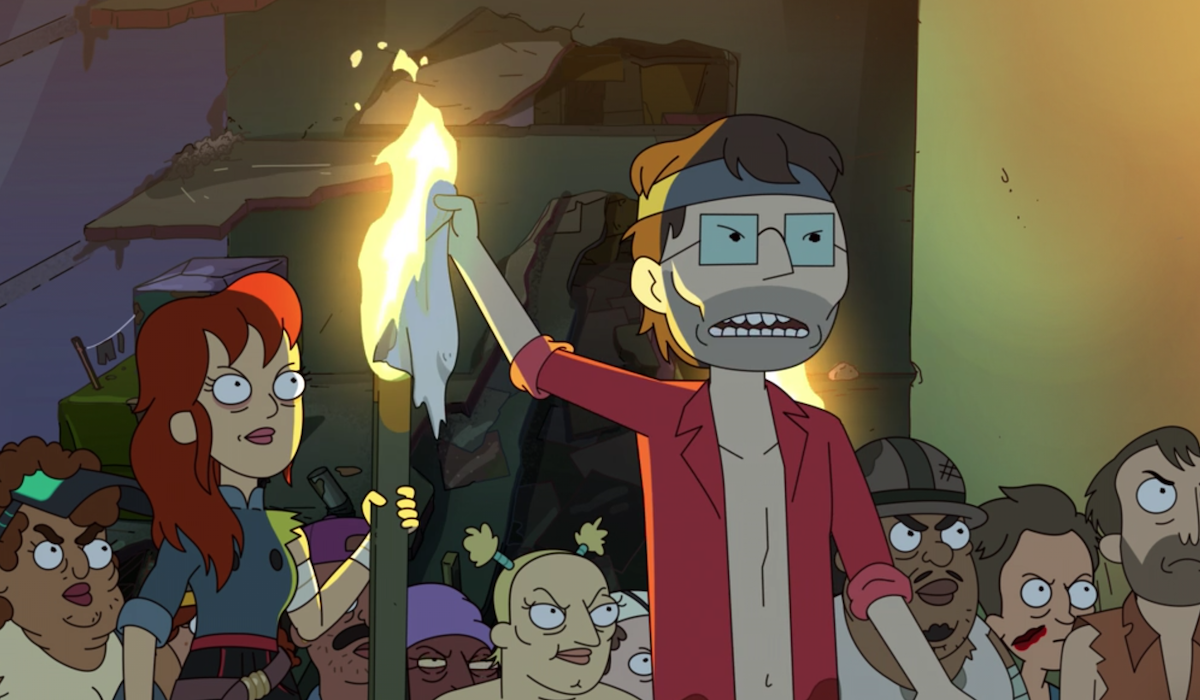
How The Wall Was Inspired By The Wire And Others
Due to its creators' influences, Solar Opposites obviously shares some creative ground with Rick and Morty, but everything within The Wall truly felt like a mutually exclusive universe. What viewers might not have expected to learn is that the overall idea of parallel storylines was directly influenced by HBO's The Wire. Here's what Mike McMahan told me:
Justin loved the idea of building a full human culture and society inside of this kind of like magnifying glass inside the replicant's room. And for me, I was geeking out so hard because it was like, the story structure of The Wire is kind of what we wanted to do, where we wanted to do half of the show as [something different]. You know, The Wire has like the dockworkers on one side and then the regular show on the other. And I've never seen that in an animated comedy before, where you have the main alien comedy structure, and then you can jump to a whole other thing that's happening simultaneously.
After hearing that, I can now only imagine that Michael K. Williams will get a cameo in Season 2 as The Wall's version of The Wire's Omar Little. Fingers so crossed.
The Wire might not have been the most obvious inspiration, but Solar Opposites did feature lots of more easily recognizable references to genre fiction. Below, Mike McMahan talks about some of those influences, including how The Wall's evil tyrant is a nod to the Escape from New York villain The Duke of New York.
Also, the sci-fi of it is based in John Carpenter's stuff, Hugh Howey's book Wool, a lot of YA novels and movies, and like Cube – I love the movie Cube – things where people are trapped together and they're kind of having to learn and build. You're seeing like a Duke of New York, and all these different sci-fi tropes. So we got to write a comedy on one side, and then like a weird sci-fi drama on the other side, which is what makes me geek out. I don't know if I should say this, but like, it doesn't even end at this season. We continue to build it as if it's a full, dramatic story in the second season, too.
I believe Solar Opposite fans would have rioted had the show returned for Season 2 without returning to the story of The Wall's inhabitants. And speaking of Season 2, we need more, Hulu!
Below, Mike McMahan talks about another reason why Episode 7 was such a special installment of Solar Opposites, or of any TV show.
In that episode we got to [achieve] my dream, [which was] we got to go record a full orchestra at the Fox soundstage. Our composer works with full orchestras for other stuff, so that episode is a fully scored orchestra – like 60-70% – so it's I'm just really proud of that episode. I love it. That is some bespoke music for us.
The dramatic and sometimes enigmatic musical score was part of what made me first realize that Solar Opposites flipped the script in Episode 7, not to mention those stripped-down opening titles. It's excellent that the creative team didn't have to rely on licensed recordings to give the visuals further depth, as landing that orchestra definitely took everything up a notch.
Stay tuned for more from CinemaBlend's interview with Solar Opposites creators Justin Roiland and Mike McMahan. All eight episodes from Season 1 are currently available to stream on Hulu. While waiting to hear whether or not Season 2 will happen, head to our Summer 2020 TV premiere schedule to see what else is coming to Hulu and beyond.
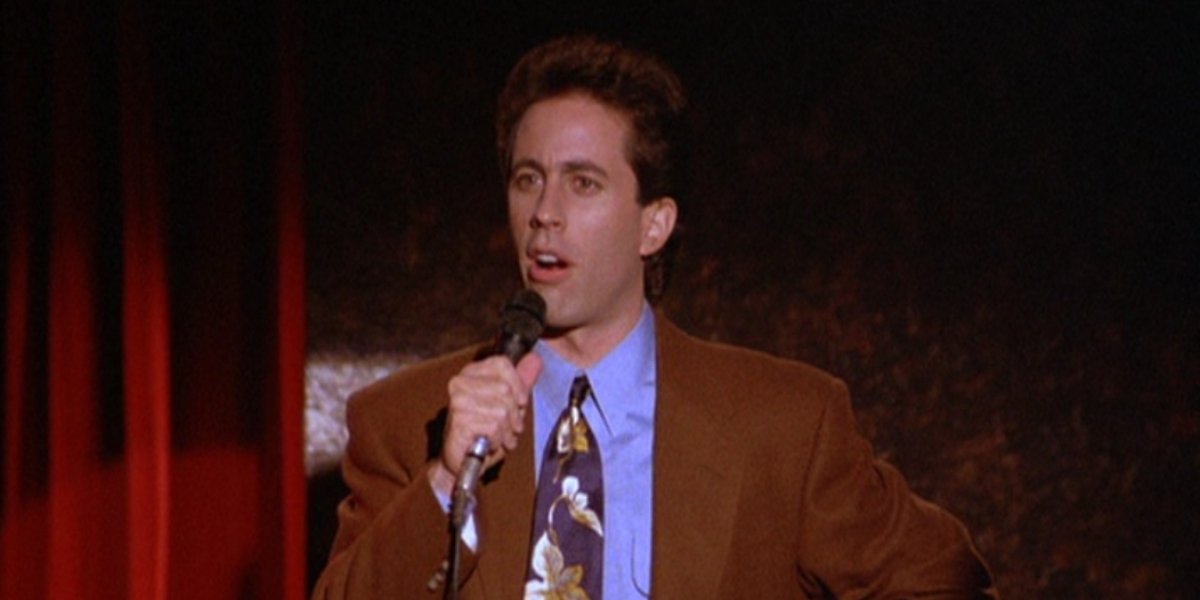
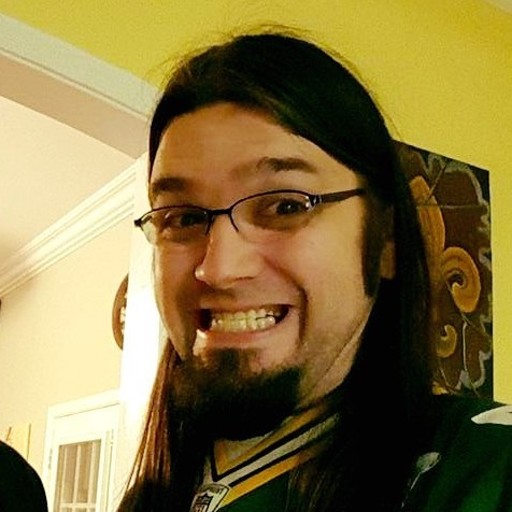
Nick is a Cajun Country native and an Assistant Managing Editor with a focus on TV and features. His humble origin story with CinemaBlend began all the way back in the pre-streaming era, circa 2009, as a freelancing DVD reviewer and TV recapper. Nick leapfrogged over to the small screen to cover more and more television news and interviews, eventually taking over the section for the current era and covering topics like Yellowstone, The Walking Dead and horror. Born in Louisiana and currently living in Texas — Who Dat Nation over America’s Team all day, all night — Nick spent several years in the hospitality industry, and also worked as a 911 operator. If you ever happened to hear his music or read his comics/short stories, you have his sympathy.
